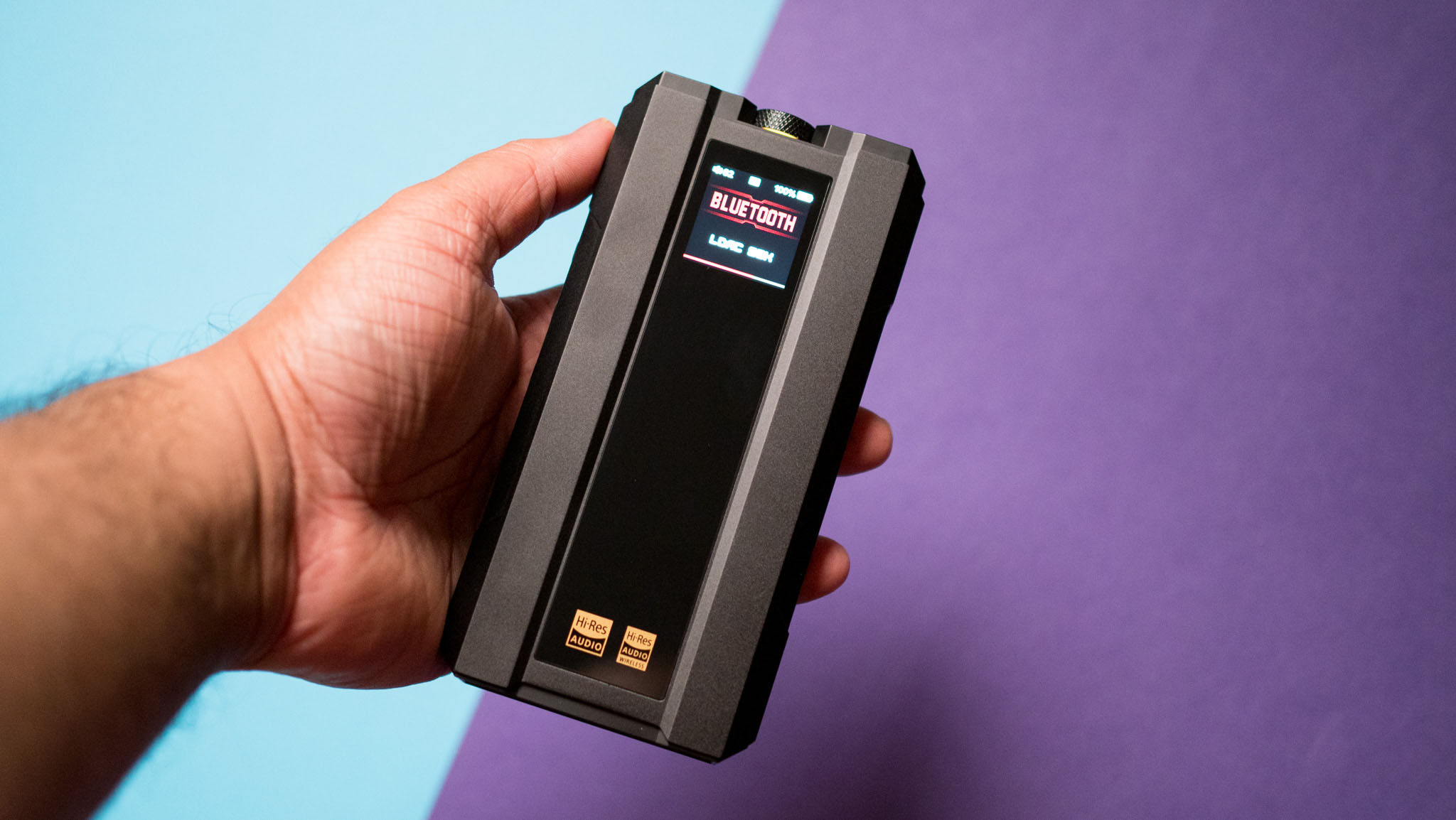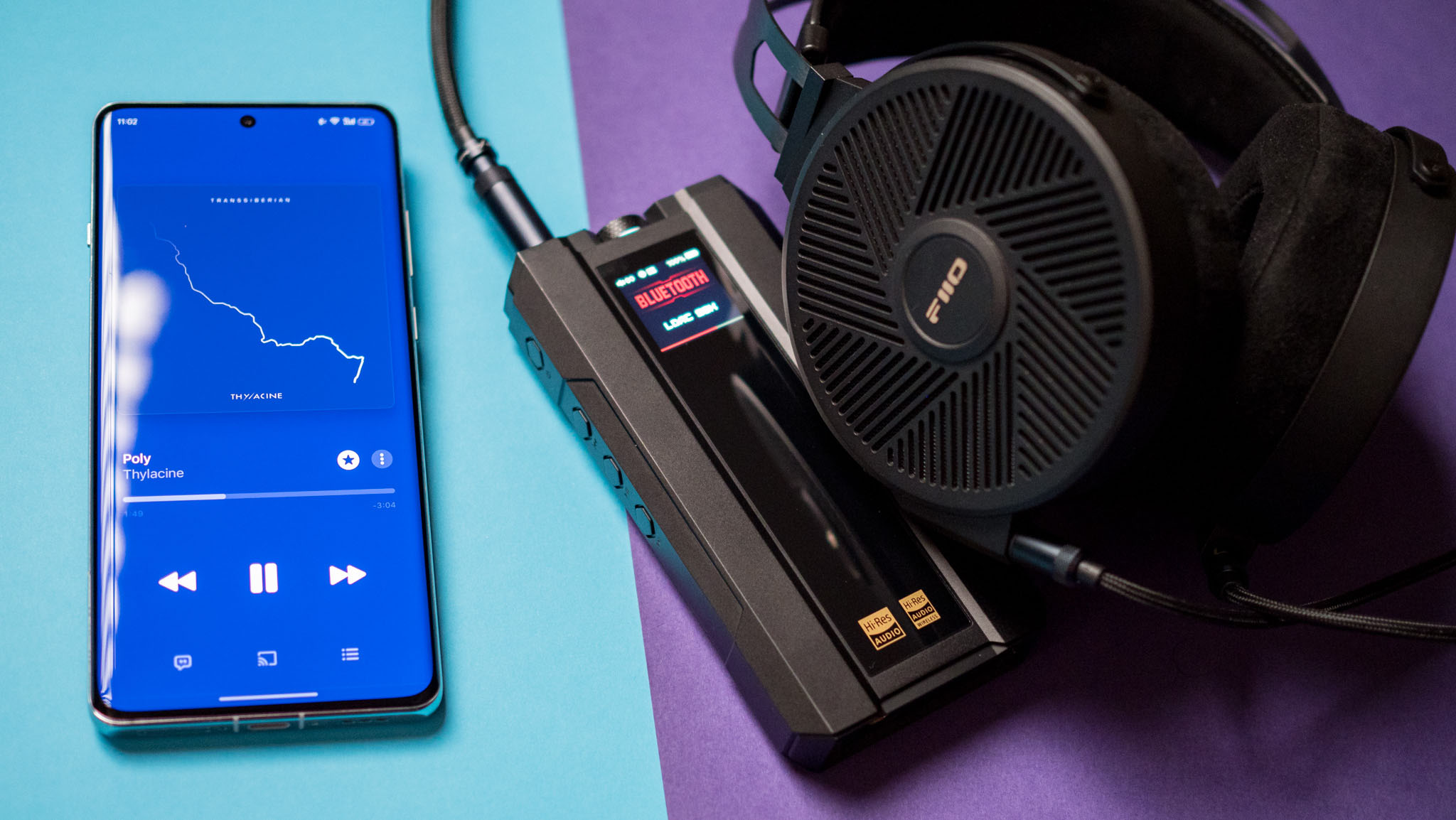
Fiio releases a lot of gear over the course of the year, and when the brand announced that it was coming out with the Q15, I thought it would be a higher-end model of the Q7. But the Bluetooth DAC costs half as much as the Q7, while retaining a similar design — albeit in a smaller size — and a lot of similar features.
If that sounds familiar, it's because Fiio has made a habit out of doing this. The K9 DAC also goes the same route, offering the same design and a ton of the same features as the flagship K9 Pro, but for a lot less. Clearly, Fiio is looking to flesh out its DAC portfolio and list products in all price segments, and in that context, the Q15 makes a lot of sense.

The Q15 is retailing at $399 on Amazon, and that is less than half of what the Q7 costs. When I reviewed the Q7, I called it an endgame DAC that had everything you could want in a portable DAC. Fiio hasn't changed too many things with the Q15; in fact, the biggest omission is the lack of a 6.35mm port — the DAC just isn't big enough to accommodate the jack. Otherwise, the Q15 is able to deliver 1.6W of power, uses AKM hardware, and has all the AptX codecs you need.
Other than that, it retains a similar design as the Q7, and you get a bold aesthetic with jagged edges that looks striking. What's great is that you now get a titanium color option, so if you don't like the look of the standard black model, the titanium variant looks much more pleasing.

Coming in at 305g, the Q15 is less than half the weight of the Q7, and that makes it a great choice if you need a portable DAC. The biggest design difference is at the back, where Fiio switched out the leather back of the Q7 with a frosted glass back that feels great to hold.

The front has a glossy insert that takes up a considerable amount of the real estate, and the 1.3-inch TFT panel is housed within the island. Fiio is reusing the same panel as the Q7, and it has the same size and resolution of 240 x 240. The panel lets you change modes — you get USB, coaxial, and Bluetooth — and you can access the settings with a long press of the volume knob, giving you access to gain, max volume, filters, and EQ. You get the same Hi-Res labels as the Q7, but there's no THX branding.

The menu interface is basic, but it gives you easy access to all the features of the DAC without having to pull up Fiio's Control mobile app. This is a small tweak, but I like that the settings menu now has a back button that lets you go back to the source page.

Fiio includes a carrying pouch with the Q15, but I would have liked to see a case similar to that of the Q7. But given the positioning of the Q15, you don't get one in the box. Other than the case, you get two USB-C to USB-C cables, a USB-A dongle, and two silicone bands that let you attach the Q15 to a phone.

The build quality of the Q15 is phenomenal; the DAC has an all-metal chassis that uses aluminum, and in the three months I had the unit, I didn't see any issues whatsoever. I like the texture volume knob too, as it makes changing the volume easier.

The Q15 has a 3.5mm single-ended port and a balanced 4.4mm port that are located on either side of the large volume knob, and as is usually the case with most Fiio products, there's an LED ring that encircles the volume knob. The Q7 gets 2.5mm and 6.35mm connectors as well, but considering the use case of the Q15, a single-ended and balanced connector are more than adequate.

Similar to the Q7, you get control buttons on the Q15, but they're now located on the left; there's a power button, and three buttons to control music playback. At the bottom is where you see the various ports; the Q15 has coaxial and USB connectors, and there's a second USB-C port that can be used to charge the DAC. By contrast, the Q7 has a single USB-C port to connect and charge the DAC, and it has an optical port in addition to coaxial.

But what's great is that you can switch between modes easily via toggles located at the bottom. You can use the Q15 in desktop mode, and it doesn't use the built-in battery in this mode. There's a phone mode as well, and in this mode, the Q15 uses its built-in battery.

On that subject, the Q15 has a 5500mAh battery that delivers just over nine hours of music playback over the balanced 4.4mm port, and eight hours on the 3.5mm jack. It takes over three and a half hours to charge the DAC, so it isn't something you'll want to do during the day. It goes up to 15W when using a USB PD charger, and I left the unit charging overnight most of the time.

Given that the Q7 has one of the best sound signatures of any portable DAC, the Q15 has a lot to offer in this area, and it is off to a promising start. The DAC uses a combination of AKM's AK4191EQ and AK4499EX, and they're joined by the Qualcomm QCC5125, which oversees the Bluetooth side of things.

The Q15 includes all the AptX codecs — AptX, AptX HD, AptX LL, and AptX Adaptive — in addition to LDAC, and in USB mode, it is able to go up to 768kHz/32-bit over PCM and DSD512. If you use the coaxial connector, it goes up to 192kHz/24-bit and DSD64.

It's the power on offer that makes the Q15 such a great choice; the DAC is able to deliver 1600mW of power, and that allows it to drive any IEM and headset in the market today. I used it with the Audeze LCD-GX, Fiio FT5 and FT3, FX15, and about a dozen IEMs over the course of the last three months, and didn't run into any issues.
Bluetooth 5.1 connectivity makes the Q15 about as easy to use as possible with a phone, and with most Android devices offering LDAC natively — Google baked it into Android several years ago — you will get 96kHz/32-bit playback over Bluetooth without any hassle.

Coming to the sound, the Q15 doesn't have any audible hiss, so even sensitive IEMs are a good pairing with the DAC. Like other Fiio DACs, the Q15 has a neutral sound that doesn't add any coloration. That said, going with AKM over the usual ESS Sabre models means you get a slightly different sound profile, with increased vibrancy in the low-end.
The bass is wonderfully detailed and textured when using the FT5, and there is a slight exuberance in the sub-bass region that makes using the Q15 that much more enjoyable. The mids are natural and have plenty of character, and the treble has good extension. The imaging and dynamics are excellent, and the Q15 is the latest in a long list of Fiio DACs that absolutely nails the technical details.

Just like the K9, the Q15 is a value leader. Yes, the Q7 has better tonality and does a better job driving endgame headsets, but if you just need a Bluetooth DAC to use with IEMs and most headsets under $1,000, it does an incredible job. The feature-set is nearly identical to what you're getting on the Q7, and the affordability makes the Q15 a no-brainer.
If you want a Bluetooth DAC with fantastic sound and sturdy build quality and a massive battery, the Q15 is an easy recommendation.







